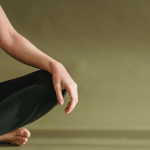The goal of this clip is to help you reconnect your brain with your pelvic floor to execute a proper Kegel.
You can learn:
– Helpful pointers for best results
– Basic anatomy of pelvic floor
– Which muscles to activate

The 7 steps for a proper Kegel:
1. Relax and get settled
2. Meet Romeo and Juliet (pubic bone and tailbone attempt to meet)
3. Meet the sitting bones toward each other
4. Close urethral sphincter and lift urogenital triangle
5. Squeeze and lift the anal sphincter
6. Lift Perineum
7. Draw upwards and inwards the vaginal passage
Today we’ll learn how to do a proper Kegel in seven steps in yoga. With these seven steps, you can begin to know yourself in a new way by creating a new connection between your brain and your pelvic floor.
Our body has an intricate design. It has an amazing capacity to heal, so there is hope if you’re trying to rebuild your pelvic floor from ground zero. That’s if you have no feeling and nothing is working down there and it is affecting the quality of your life, you’ve come to the right place. You can start with one or two elements of the steps of the seven steps and eventually bring them all together, building them one step at a time.
So how do we find our pelvic floor? Let’s start with the sit bones in this seated position. Just rock your body side to side a few times and feel those bones as they press into your chair or mat. Now keeping the body still can place one hand on your pubic bone and the other hand on your tailbone.

We’ve now just identified a diamond shape using these bony landmarks. If we divide this diamond horizontally, we get two triangles. The urogenital triangle is from the pubic bone down to the left and right sitting. The anal triangle is from the tailbone at the bottom to the two sitting bones at the sides.
Together they form the pelvic diaphragm, which sits within the diamond. Bone shape structure and supports the bladder, intestines, the uterus in women, and also helps with continents, functions with the urinary and anal sphincters. You have a lot of muscles that are playing a role in the pelvic floor. We won’t talk about what these muscles are for now, but only where we want to contract.
Always remember that even as you contract your pelvic floor muscles, the major support muscles of the pelvis, remember. Abdomen back, buttocks and hips. These larger muscles remain relaxed. Okay, here we go: Seven steps to a better Kegel. Seven steps to help you reconnect the mind to the pelvic floor floor.
You’ve probably heard that keels can help you improve your orgasm. In the next post, we’ll learn how to practice to have the best orgasm ever.








